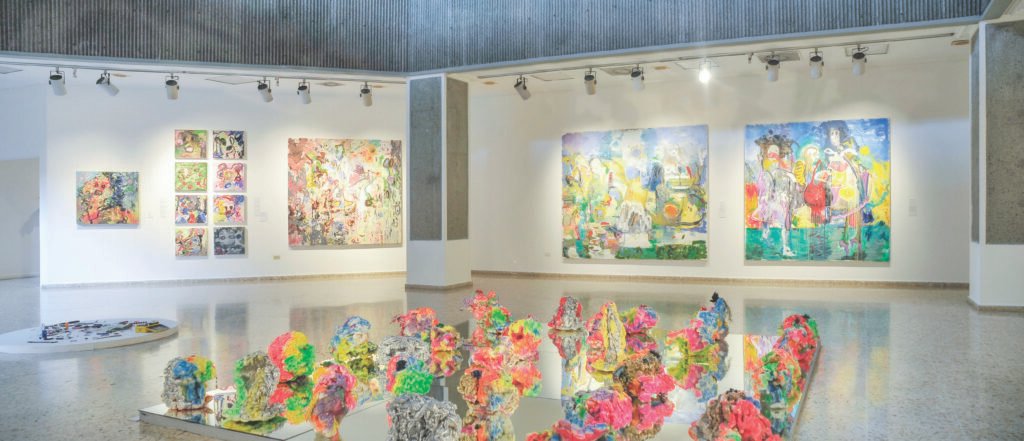
Sound of colors
by Pedro Delgado Malagón
In the book Concerning the Spiritual in Art (1912), the Russian painter Vassily Kandinsky (1866-1944) stated that a brushstroke of bright red produced the same psychological effect as a clarion call. His endeavor, more than anything else, hinted at the regeneration of the world through a new art of absolute virginity. With such certainty Kandinsky exhibited three works of what he called chromatic music. And that was how it emerged, intertwined with the arpeggios of pure colors of that palette, what we now call abstract art.
Although it was Paul Klee (1897-1940) (a Swiss painter, friend of Kandinsky and also fond of music) who defined perhaps more accurately the creative guidelines of the contemporary artist. In a lecture at the Bauhaus, Klee expressed that the new pictorial experiences were not aimed at discovering new methods of representing reality, but rather at finding new possibilities of playing with forms. Nature itself, he explained, creates through the artist; it is the same mysterious power that created the magical forms of prehistoric animals and the fantastic, enchanted realm of the abyssal fauna that is still active in the artist’s mind and develops his creations. Many modern artists, who share Klee’s confidence in creative freedom, consider even the idea of proposing a deliberate finality in art to be a mistake. They believe that the work must grow according to its own claims, to its own exclusive and hidden urgencies.
In Rosario Rivera-Bond’s paintings throb a condensation of memories and passions, of nostalgias and sonorities (like Kandinsky’s) that are born of a luminous and tremulous chromatic firmament. The pure shades—red, blue, yellow—state clean and fragrant reasons. Here, there are gray and pink presages that develop in dawn-like brightness. The canvas Dwelling on the Park shows a foreshortened figure that crosses the equated space.
In Le Printemps (The Spring) floats a “green dyed with melodious golds.” In these pictorial abstractions the forms are born and are hidden behind the sparkling width. They become thin in the transgression of the chiaroscuro, in the subtle dance of primordial cadences. They are evocations and nostalgias fused in the sonorous reflections of a dream.
Octavio Paz defines the essential poetic operation in this way: “In this to see that.” Let us say it in another way: in the next, in the immediate, to catch the remote. However, “the limits of my world are the limits of my language,” to use the words of the Austrian philosopher Ludwig Wittgenstein. True: there is no transcendent vision or legitimate artistic suggestion without a clever, solid, effective language.
In our case, the artist proves to be the owner of a craft and a deft, enveloping and convinced look. In her squares her mastery of color is as evident as her poetic imagination. Her images are interlaced sound representations which meditate on the meaning and fullness of existence.
The iconography that my friend Rosario Rivera-Bond perceives and sketches—her illustrated anecdotes and her plausible contemplations— are illuminated by an inner passion whose radiance envelops us all. I do not believe that there is really a more dignified task for an artist.
Text created for the exhibition “Simply an Illusion”. Museo de Arte Moderno. Santo Domingo, 2011.